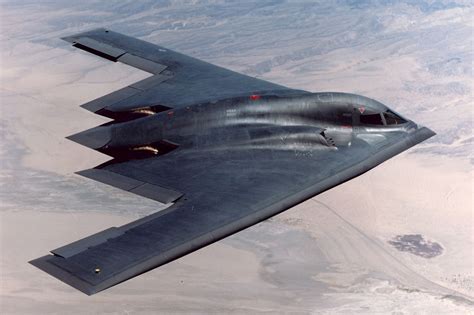
Newly surfaced video footage captures the harrowing takeoff and subsequent crash of an Air India Express flight in 2020 at Kozhikode International Airport (CCJ) in Kerala, India, reigniting discussions about airport safety and the circumstances surrounding the tragedy that claimed the lives of 21 people, including both pilots. The footage, obtained by an aviation website and now circulating widely, offers a chilling perspective on the final moments of Flight IX 1344 as it attempted to land in adverse weather conditions.
The video shows the Boeing 737-800 aircraft touching down at high speed far beyond the designated touchdown zone on Runway 10, which was waterlogged due to heavy monsoon rains. The plane overshot the runway, plunged into a 30-foot valley, and broke into two pieces upon impact. The accident occurred on August 7, 2020, and the newly released footage adds another layer to the existing investigations and reports concerning the crash.
The Harrowing Footage and Its Implications
The footage, taken from what appears to be a vantage point overlooking the runway, provides a stark visual account of the crash. It clearly shows the aircraft’s high-speed landing, the pilots’ attempt to abort the landing, and the ultimate failure to bring the plane to a halt before it careened off the runway. The video’s release has prompted renewed scrutiny of the factors contributing to the crash, including the weather conditions, the condition of the runway, and the decisions made by the flight crew.
According to reports, the pilots had attempted an initial landing but aborted it due to poor visibility. The ill-fated second attempt resulted in the crash. The footage corroborates the findings of the official investigation, which pointed to a combination of pilot error and adverse weather conditions as the primary causes of the accident. However, the video also raises questions about whether the airport’s infrastructure and safety protocols were adequate to handle such challenging conditions.
Official Investigation and Findings
The Aircraft Accident Investigation Bureau (AAIB) conducted a thorough investigation into the Air India Express crash. The final report, released in 2022, attributed the accident to the pilot’s failure to adhere to standard operating procedures (SOPs). Specifically, the report cited the pilot’s decision to continue with the landing despite the unfavorable weather conditions and the long touchdown as critical factors.
The AAIB report also highlighted the following contributing factors:
- Adverse Weather: Heavy rainfall and poor visibility significantly reduced the pilot’s ability to accurately assess the landing conditions.
- Runway Condition: The runway was waterlogged, which reduced the aircraft’s braking efficiency.
- Pilot Error: The pilot’s delayed response in initiating a go-around and the failure to utilize the available runway length contributed to the accident.
- SOP Deviations: The investigation revealed deviations from standard operating procedures by the flight crew.
The report made several recommendations to improve aviation safety, including enhanced pilot training, stricter adherence to SOPs, and improvements to runway safety measures.
The Aftermath and Compensation
The Air India Express crash had a devastating impact on the families of the victims. The airline provided compensation to the families of the deceased and injured passengers. The compensation packages varied depending on the age, income, and other factors related to the victims.
In addition to financial compensation, the airline also offered employment opportunities to the next of kin of the deceased employees. The Indian government also provided assistance to the affected families.
Airport Safety Concerns and Runway End Safety Areas (RESA)
The Kozhikode International Airport has faced criticism regarding its safety infrastructure, particularly the short runway and the lack of a proper Runway End Safety Area (RESA). A RESA is a designated area beyond the runway end that is designed to reduce the risk of damage to an aircraft in the event of an overrun or undershoot.
The absence of a RESA at Kozhikode Airport was a significant concern, as it increased the risk of a catastrophic outcome in the event of a runway excursion. The airport’s location on a hilltop also presented challenges, as it limited the options for extending the runway or constructing a RESA.
Following the crash, aviation experts and safety advocates called for immediate action to improve airport safety, including the implementation of RESA and other safety enhancements. The government has since taken steps to address these concerns, but progress has been slow due to the challenging terrain and other logistical constraints.
Aviation Experts’ Perspectives
Aviation experts have weighed in on the newly released footage and the circumstances surrounding the Air India Express crash. Many experts agree that the accident was a result of a complex interplay of factors, including pilot error, adverse weather, and inadequate safety infrastructure.
“The footage provides a stark reminder of the risks associated with landing in challenging conditions,” said Captain Mohan Ranganathan, a veteran pilot and aviation safety expert. “It underscores the importance of adhering to standard operating procedures and the need for robust safety measures at airports.”
Other experts have emphasized the importance of investing in runway safety enhancements, such as RESA, to mitigate the risk of runway excursions. They have also called for improved pilot training and better weather forecasting systems to help pilots make informed decisions during critical phases of flight.
Air India’s Response and Safety Measures
Following the crash, Air India Express has taken several steps to enhance safety and prevent similar accidents from occurring in the future. These measures include:
- Enhanced Pilot Training: The airline has implemented enhanced pilot training programs that focus on landing techniques in adverse weather conditions.
- Stricter Adherence to SOPs: Air India Express has reinforced the importance of adhering to standard operating procedures and has implemented stricter monitoring mechanisms to ensure compliance.
- Improved Weather Forecasting: The airline has invested in improved weather forecasting systems to provide pilots with more accurate and timely information about weather conditions at airports.
- Runway Safety Audits: Air India Express has conducted comprehensive runway safety audits at all airports it operates to identify potential hazards and implement corrective measures.
The airline has also worked closely with aviation regulators and safety experts to implement best practices and enhance safety standards across its operations.
Broader Implications for Aviation Safety
The Air India Express crash has broader implications for aviation safety worldwide. It serves as a reminder of the importance of continuous improvement in safety standards and the need for a proactive approach to risk management.
The accident has also highlighted the challenges of operating in challenging environments, such as airports with short runways or adverse weather conditions. It underscores the need for pilots to be well-trained and equipped to handle these challenges and for airports to have adequate safety infrastructure to mitigate the risks.
The Human Cost of the Tragedy
Beyond the technical analysis and safety recommendations, the Air India Express crash was a profound human tragedy. The loss of 21 lives, including the pilots, left families grieving and communities in mourning.
The stories of the victims and their families serve as a poignant reminder of the human cost of aviation accidents. It underscores the importance of prioritizing safety above all else and of working tirelessly to prevent similar tragedies from occurring in the future.
The Role of Technology in Preventing Accidents
Technology plays an increasingly important role in preventing aviation accidents. Advanced systems such as enhanced ground proximity warning systems (EGPWS), runway awareness and advisory systems (RAAS), and head-up displays (HUD) can provide pilots with critical information and warnings that can help them avoid accidents.
EGPWS, for example, provides pilots with alerts when the aircraft is in danger of terrain impact. RAAS provides pilots with information about the aircraft’s position on the runway and alerts them to potential hazards. HUDs project critical flight information onto the windshield, allowing pilots to keep their eyes focused outside the cockpit.
These technologies can significantly enhance safety and reduce the risk of accidents, particularly in challenging environments.
Future of Aviation Safety
The future of aviation safety will depend on a combination of factors, including technological advancements, improved training, stricter regulations, and a culture of safety.
Continued investment in research and development will lead to new technologies that can further enhance safety. Improved training programs will ensure that pilots are well-prepared to handle a wide range of scenarios. Stricter regulations will help to enforce safety standards and prevent complacency. A culture of safety will encourage all stakeholders in the aviation industry to prioritize safety above all else.
By working together, the aviation industry can continue to improve safety and make air travel even safer for passengers and crew.
The Perspective of the Victims’ Families
For the families of the victims, the release of the new footage has reopened old wounds. While some feel it provides a clearer understanding of the events leading up to the crash, others find it deeply distressing to relive the tragedy.
“It’s painful to see the footage,” said one family member, who wished to remain anonymous. “It brings back all the memories and the grief. But I hope it will also help to ensure that something like this never happens again.”
The families have called for accountability and transparency in the investigation and have urged the authorities to take all necessary steps to improve airport safety.
The Impact on the Aviation Industry in India
The Air India Express crash has had a significant impact on the aviation industry in India. It has led to increased scrutiny of airport safety standards and has prompted calls for improvements in pilot training and regulatory oversight.
The accident has also raised awareness of the challenges of operating in challenging environments, such as airports with short runways or adverse weather conditions. It has underscored the need for a proactive approach to risk management and for continuous improvement in safety standards.
The Importance of International Cooperation
Aviation safety is a global issue that requires international cooperation. The International Civil Aviation Organization (ICAO) plays a critical role in setting international standards for aviation safety and in promoting cooperation among countries.
ICAO works with member states to develop and implement safety standards, to conduct safety audits, and to provide technical assistance. It also facilitates the exchange of information and best practices among countries.
By working together, countries can enhance aviation safety and make air travel safer for passengers and crew worldwide.
Conclusion: Lessons Learned and the Path Forward
The Air India Express crash at Kozhikode International Airport was a tragic event that claimed the lives of 21 people. The newly released footage serves as a stark reminder of the risks associated with landing in challenging conditions and underscores the importance of adhering to standard operating procedures and implementing robust safety measures at airports.
The official investigation attributed the accident to a combination of pilot error, adverse weather, and inadequate safety infrastructure. The report made several recommendations to improve aviation safety, including enhanced pilot training, stricter adherence to SOPs, and improvements to runway safety measures.
The crash has had a significant impact on the aviation industry in India and has prompted calls for improvements in airport safety standards and regulatory oversight. It has also highlighted the importance of international cooperation in enhancing aviation safety worldwide.
Moving forward, it is essential to learn from the lessons of this tragedy and to take all necessary steps to prevent similar accidents from occurring in the future. This includes investing in technology, improving training, strengthening regulations, and fostering a culture of safety throughout the aviation industry. Only through a concerted effort can we ensure that air travel remains the safest mode of transportation.
Frequently Asked Questions (FAQ)
1. What caused the Air India Express Flight IX 1344 crash in Kozhikode?
The official investigation by the Aircraft Accident Investigation Bureau (AAIB) attributed the crash to a combination of factors, primarily pilot error and adverse weather conditions. The pilot failed to adhere to standard operating procedures, continuing the landing despite unfavorable weather (heavy rain and poor visibility) and executing a long touchdown. The waterlogged runway further reduced braking efficiency.
2. What does the newly released video footage show?
The video footage captures the Air India Express flight landing at high speed far beyond the designated touchdown zone on Runway 10. It shows the pilots attempting to abort the landing, but failing to stop the aircraft before it overran the runway, plunged into a valley, and broke apart.
3. What safety concerns have been raised about Kozhikode International Airport (CCJ)?
Concerns center around the airport’s short runway and the absence of a proper Runway End Safety Area (RESA). The hilltop location also limits options for runway extension or RESA construction. These factors increase the risk of catastrophic outcomes in case of runway overruns or undershoots.
4. What steps has Air India Express taken to improve safety after the crash?
Air India Express has implemented enhanced pilot training programs focusing on landing techniques in adverse weather, reinforced adherence to standard operating procedures, invested in improved weather forecasting systems, and conducted comprehensive runway safety audits at all airports it operates.
5. What is a Runway End Safety Area (RESA) and why is it important?
A Runway End Safety Area (RESA) is a designated area beyond the runway end designed to reduce the risk of damage to an aircraft in the event of an overrun or undershoot. It provides a buffer zone to slow down or stop an aircraft, preventing more severe accidents. Its absence at Kozhikode Airport was a major safety concern highlighted after the crash.









